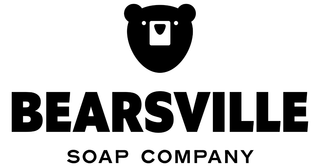At Bearsville Soap Company, we pride ourselves on our naturally superior soap. When producing our soap, we avoided the many chemicals that are found in commercially made products.
Here are some of the common issues and unhealthy ingredients to watch out for:
Don’t Use Antibacterial Soap
Antibacterial soaps have become prevalent in households. It is estimated that 72% of liquid soap sold in the United States contains antibacterial ingredients. Its also in toothpastes, laundry detergents, etc.
Natural, chemical-free soaps already clean effectively. The use of antibacterial soap is not only unnecessary but may cause more harm than good:
- Overuse of antibacterials promote drug-resistant superbugs that might otherwise be kept in check with little more than a wash.
- Triclosan, active ingredient in most antibacterial soap, not only kills bacteria, but also kills human cells.
- When common bacteria are wiped out by antibacterial soap, children aren’t exposed to them. Some exposure to bacteria in childhood can strengthen immune systems. Without exposure, children may be prone to allergies and asthma.
Triclosan
- When triclosan comes in contact with your skin, it stays there for many hours. Triclosan is similar to the pesticide Agent Orange and can cause decreased fertility, birth defects, and damage to major body organs.
- Triclosan can combine with chlorine in tap water to make chloroform gas, which the EPA classifies as a probable human carcinogen.
Sodium Lauryl Sulfate, Sodium Laureth Sulfate (SLS)
SLS is a common ingredient in shampoos, liquid soaps, and toothpaste.
- SLS is the active ingredient in garage floor cleaners, engine degreasers, and industrial strength soaps.
- It can damage cell membranes and possibly cause hair loss.
- It is also linked to skin and eye irritation, organ toxicity, developmental/reproductive toxicity, neurotoxicity, endocrine disruption, ecotoxicological, and biochemical or cellular changes, and possible mutations and cancer, as reported by the Environmental Working Group's Skin Deep database.
Parabens
Parabens are in most skin care products. They preserve other ingredients and extend a product’s shelf life. There are many types of parabens: methylparaben, butylparaben, propylparaben, etc. They are something to avoid completely:
- Parabens have have hormone-disrupting effects.
- Parabens can cause diminished muscle mass and extra fat storing.
- Topical parabens have been detected in human tumors.
Ureas
These chemicals have several concerns associated with them:
- Ureas can release formaldehyde and cause joint pain, heart irregularities, and a weakened immune system.
- Ureas are a primary cause of contact dermatitis.
Synthetic Colors
Synthetic colors are made from coal tar. They contain metal salts that may deposit toxins onto the skin, causing skin sensitivity and irritation. Animal studies have shown almost all of them to be carcinogenic. They will be labeled as FD&C or D&C, followed by a color and a number.
Diethanolamine (DEA)
DEA is used as a wetting agent in shampoos, lotions, creams and other cosmetics. It is linked to cancer, developmental/reproductive toxicity, allergies/immunotoxicity, and organ system toxicity.
Propylene Glycol, Propylene Oxide, Polyethylene Glycol
Propylene glycol is the main ingredient in anti freeze and is listed on the FDA government website as a known carcinogen.
- It is found in hand sanitizers, moisturizers, shaving creams, deodorants, and baby products.
- Propylene glycol weakens skin cells.
- It is linked to cancer, developmental/reproductive toxicity, allergies/immunotoxicity, and organ system toxicity.





